
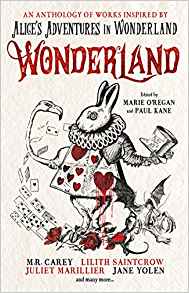
Wonderland: An Anthology of Works Inspired By Alice’s Adventures in Wonderland offers a diverse mix of stories based on Lewis Carroll’s classic. I enjoyed Genevieve Cogman’s “The White Queen’s Pawn.” I’m a fan of Cogman’s Invisible Library series so I appreciated her off-beat approach to Alice’s Wonderland. Jonathan Green’s clever “The Hunting of the Jabberwock” blends elements of Lewis Carroll’s universe with a tricky scam. I’m reading George Mann’s Newbury and Hobbs steam-punk mysteries so I was intrigued by his approach to Wonderland in “About Time” where reality is fluid. L. I. McKinney’s “What Makes a Monster” dabbles in the Dark Side of Wonderland. Events spin out of control in “The White Queen’s Dictum” by James Lovegrove. If you’re looking of an off-beat anthology of surprising stories, give Wonderland a try. Do you have a favorite Wonderland character? GRADE: B
TABLE OF CONTENTS:
INTRODUCTION by Marie O’Regan and Paul Kane 1
“Alice in Armor’ by Jane Yolen 5
‘Wonders Never Cease’ by Robert Shearman 9
‘There Were No Birds to Fly’ by M.R. Carey 35
‘The White Queen’s Pawn’ by Genevieve Cogman 57
‘Dream Girl’ by Cavan Scott 73
‘Good Dog, Alice!’ by Juliet Marillier 97
‘The Hunting of the Jabberwock’ by Jonathan Green 117
‘About Time’ by George Mann 143
‘Smoke ‘em if you got ‘em’ by Angela Slatter 161
‘Vanished Summer Glory’ by Rio Youers 189
‘Black Kitty’ by Catriona Ward 207
‘The Night Parade’ by Laura Mauro 221
‘What Makes a Monster’ by L.L. McKinney 243
‘The White Queen’s Dictum’ by James Lovegrove 267
‘Temp Work’ by Lilith Saintcrow 281
‘Eat Me, Drink Me’ by Alison Littlewood 299
‘How I Comes To Be the Treacle Queen’ by Cat Rambo 317
‘Six Impossible Things’ by Mark Chadbourn 329
‘Revolution in Wonder’ by Jane Yolen 351
About the Authors 353
About the Editors 361
Acknowledgements 365
Author Archives: george
JUDY and THE BEST OF JUDY GARLAND
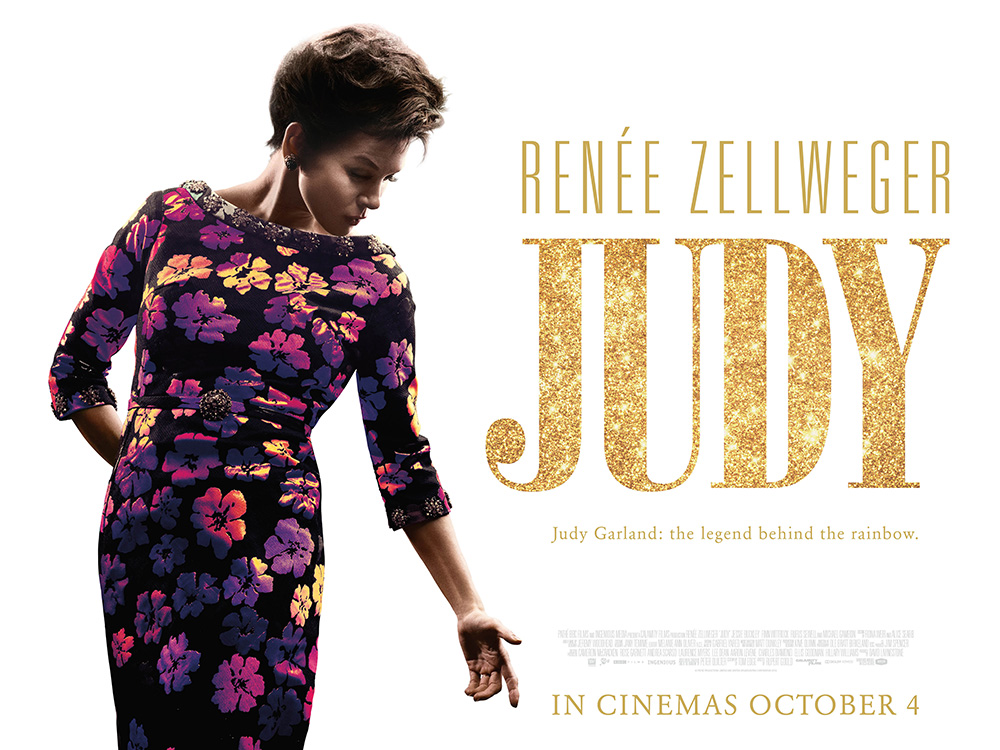
I know it’s early, but Rene Zellweger has my vote for the Best Actress Oscar after watching her astonishing performance as Judy Garland. Based on Peter Quilter’s play, The End of the Rainbow, and adapted for the screen by Tom Edge, Judy is mostly set in 1969 in London, England. Judy Garland, living on a toxic diet of uppers, downers, booze, and nicotine finds herself homeless and broke. She’s burned her bridges in America because of her erratic behavior and unstable life-style. No one will hire her.
In a desperate attempt to pay off her debts and provide a home for her children, Lorna and Joey, Garland agrees to travel to London to perform nightly at the Talk of the Town nightclub. Director Rupert Goold weaves in flashbacks to Judy’s early days at MGM. We see her manipulated by Louis B. Mayer, fed diet pills, and forced to work 18-hour days. It becomes apparent why this 47-year-old Judy Garland is so brittle, bitchy, and desperate.
As Judy’s life spirals out of control, Rene Zellweger’s performance–nuanced, credible, and deeply emotional–takes us down into the darkest levels of psychology and despair. We see one of the great Hollywood stars turn into a black hole before our eyes. Do you have a favorite Judy Garland song or movie? GRADE:A

TRACK LIST:
1 That’s Entertainment!
2 More (Live)
3 Come Rain Or Come Shine
4 It’s Yourself
5 Lucky Day
6 I Could Go On Singing (Till The Cows Come Home)
7 Day In – Day Out
8 A Foggy Day (Live At Carnegie Hall/1961)
9 Medley: Almost Like Being In Love/This Can’t Be Love (Live At Carnegie Hall/1961)
10 Fly Me To The Moon (Live)
11 Battle Hymn Of The Republic (Live)
12 Zing! Went The Strings Of My Heart
13 You’ll Never Walk Alone
14 Old Devil Moon
15 Maggie, Maggie May
16 You Made Me Love You/For Me And My Gal/The Trolley Song (Medley)
17 The Man That Got Away
18 Rock-A-Bye Your Baby With A Dixie Melody
19 As Long As He Needs Me (Live)
20 Over The Rainbow
THE KNOWLEDGE GAP: The hidden cause of America’s broken education system–and how to fix it By Natalie Wexler
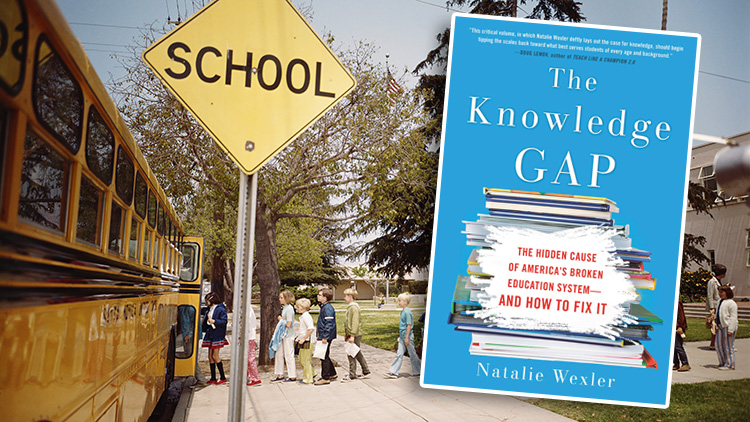
“[Teachers] told me their students don’t understand the difference between a country and a continent, or between a city and a state. One kid in an SAT pre class–one of the better students…was surprised by the term South America when he saw it on a map, apparently for the first time: How could it be called America if wasn’t in America?” (p.21).
Natalie Wexler covers education issues for The New York Times, The Atlantic, and Forbes.com. Wexler shows that much of the average American school day is taken up with “process” rather than teaching knowledge. Reading is often taught through a regimen of repetition and drills. History is seldom taught (too controversial). Students graduate High School and find they have to take a year (or two!) of remedial classes at the College of their choice.
Wexler presents a convincing case that more “content” might help students get a true education. Doing spelling or math drills on a computer isn’t much of an advance over the old-fashioned worksheets. Actually learning multiplication tables instead of resorting to calculators would be useful. Learning cursive writing (which isn’t taught in our local schools anymore) instead of only printing would be a plus. And “teaching to the test” both fatigues teachers and students and steals motivation. Our students are falling behind most First World countries in education. That will result in a messy Future for all of us. What was your favorite subject when you went to school? GRADE: B+
TABLE OF CONTENTS:
Part 1 The Way We Teach Now: All You Need Is Skills
Chapter 1 The Water They’ve Been Swimming In 3
Chapter 2 A Problem Hiding in Plain Sight 24
Chapter 3 Everything Was Surprising and Novel 45
Chapter 4 The Reading Wars 64
Chapter 5 Unbalanced Literacy 82
Chapter 6 Billions for Education Reform, but Barely a Cent for Knowledge 104
Part 2 How We Got Here: The History Behind the Content-Free Curriculum
Chapter 7 Émile Meets the Common Core 129
Chapter 8 Politics and the Quest for Content 150
Part 3 How We Can Change: Creating and Delivering Content-Focused Curriculum
Chapter 9 The Common Core: New Life for Knowledge, or Another Nail in Its Coffin? 171
Chapter 10 No More Jackpot Standards 194
Chapter 11 Don’t Forget to Write 217
Chapter 12 Scaling Up: Can It Be Done? 243
Epilogue 260
Acknowledgments 265
Notes 271
Index 309
NEW ENGLAND PATRIOTS VS. BUFFALO BILLS

The 3-0 New England Patriots take on the 3-0 Buffalo Bills this afternoon before a sold-out New Era Field. Tom Brady is 30-3 against the Bills so it’s not a surprise that the Patriots are favored by 7 points. It will be the 42-year-old Tom Brady against the 23-year-old Josh Allen. If the Bills can keep the score close, anything can happen. But the Patriots Defense hasn’t given up a touchdown since before their Super Bowl win. How will your favorite NFL team do today?
MEAN GIRLS: THE MUSICAL

Tina Fey has been seen visiting some local Buffalo diners and chicken wing salons. Fey’s touring company launches its performances of Mean Girls: The Musical this week at Shea’s Performing Arts Center. Diane and I attended a sold-out matinee with an audience of mostly teen-age girls and their mothers. Mean Girls: The Musical, based on the 15-year-old movie written by Tina Fey (based non-fiction book Queen Bees and Wannabes by Rosalind Wiseman) featuring high school cliques and bad behavior. The movie made Lindsay Lohan a star.
This musical was loud and energetic. There’s plenty of dancing and gymnastics to Jeff Richmond’s music with lyrics by Nell Benjamin, The plot pretty much follows the movie. Danielle Wade, who plays “Good Girl Gone Bad” Cady Heron, delivers a sparkling performance. Super-popular Regina George and her posse (The Plastics) exert their peer pressure on Cady to change her from a transparent and honest teenager into a fashionable dream girl.
I’m not sure Diane and I are the target audience for Mean Girls: The Musical. Maybe you are. Did you like the movie version of Mean Girls? GRADE: B-
FRIDAY’S FORGOTTEN BOOKS #548: NORMAN ROCKWELL’S AMERICA
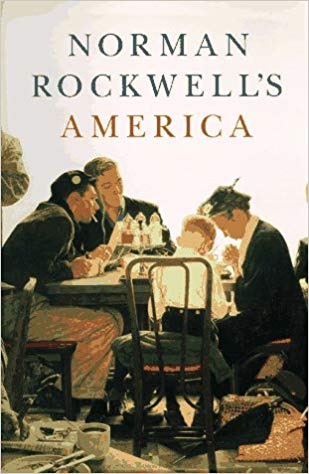
When I was growing up in the 1950s and early 1960s, one of my weekly delights was the arrival of The Saturday Evening Post especially if the cover was a painting by Norman Rockwell. I didn’t know much about painting (I still don’t) but I knew those Rockwell paintings resonated with me. Rockwell captured the essence of the subjects he explored: American Life, family life, workers, children, Christmas, and romance. Somehow, Rockwell’s creations seemed real to me and captured Life at that time. Critics dismissed Norman Rockwell as a commercial artist who painted the banality of American Life.
I don’t own many art books, but I do have a copy of Norman Rockwell’s America (1975) in my book collection. I enjoy the dozens of examples of classic Rockwell artwork that still have the power to tap into my emotions. This is high-test nostolgia at its best!
Do you remember Norman Rockwell’s paintings? Do you have a favorite? GRADE: A
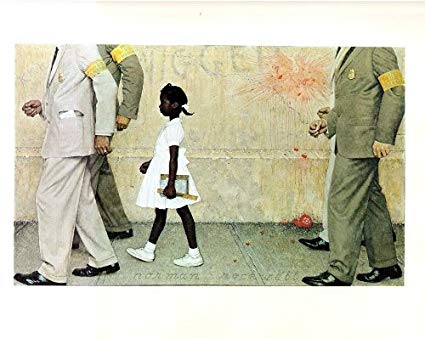
TABLE OF CONTENTS:
Opening Photographic Essay by John Bryson
Introduction 15
The Setting 33
Growing Up in America 47
Young Love 76
Home and Family 95
Growing Old in America 119
The American Past in Fact and Fiction 139
Democracy 161
So You Want to See the President 177
Americans in Uniform 193
Americans at Work 205
The Sporting Life 225
An American Gallery 243
Christmas 255
Post Covers 267
Biographical Outline 307
Index to Illustrations 309
FORGOTTEN MUSIC #96: ROLLING STONE PRESENTS: THE GREATEST HITS OF CLASSIC ROCK (3-CD Set)
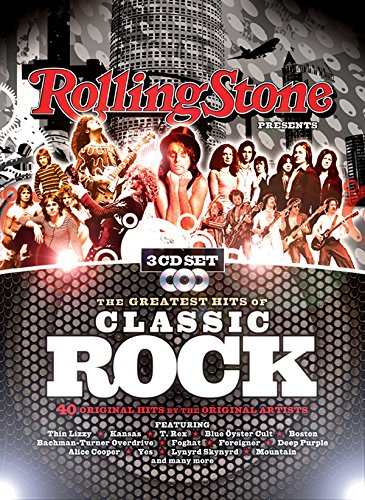
Is “Godzilla” by Blue Öyster Cult one of the Greatest Hits of Classic Rock? Is “Jane” by Jefferson Starship even the best Jefferson Starship song? (I would vote for “Miracles”) Despite the dubious adjective of “Greatest” there were enough recognizable and listenable songs on this 2008 Rhino Records collection for me to spend a buck to buy it at a garage sale. There seems to be no order to these songs, not chronological, not by genre. And a lack of women artists and top tier groups. This 3-CD set is a real grab bag of random songs.
Do you remember any of these “hits”? Any favorites here? GRADE: B
TRACK LIST:
Disc: 1
1. You Ain’t Seen Nothing Yet – Bachman-Turner Overdrive
2. Blinded By The Light – Manfred Mann’s Earth Band
3. Slow Ride – Foghat
4. All Right Now – Free
5. Dirty White Boy – Foreigner
6. Highway Star – Deep Purple
7. Bad Motor Scooter – Montrose
8. Stay With Me – Faces
9. Lonely Boy – Andrew Gold
10. Jesus Is Just Alright – The Doobie Brothers
11. Ride Captain Ride – Blues Image
12. No More Mr. Nice Guy – Alice Cooper
13. Smokin’ In The Boy’s Room – Brownsville Station
Disc: 2
1. Smoke On The Water – Deep Purple
2. Bang A Gong (Get It On) – T. Rex
3. Hot Blooded – Foreigner
4. We’re An American Band – Grand Funk Railroad
5. What’s Your Name – Lynyrd Skynyrd
6. Fool For The City – Foghat
7. Long Train Runnin – The Doobie Brothers
8. Long Distance Runaround – Yes
9. Love Is Alive – Gary Wright
10. Rock Candy – Montrose
11. Must Of Got Lost – J. Geils Band
12. Double Vision – Foreigner
13. In-A-Gadda-Da-Vida – Iron Butterfly
Disc: 3
1. Free Ride – The Edgar Winter Group
2. The Boys Are Back In Town – Thin Lizzy
3. Carry On Wayward Son – Kansas
4. (Don t Fear) The Reaper – Blue Öyster Cult
5. American Woman – The Guess Who
6. Peace Of Mind – Boston
7. Hold Your Head Up – Argent
8. All The Young Dudes – Mott the Hoople
9. Mississippi Queen – Mountain
10. Raise A Little Hell – Trooper
11. Jane – Jefferson Starship
12. Two Tickets To Paradise – Eddie Money
13. Godzilla – Blue Öyster Cult
14. Rock And Roll All Nite – Kiss
MYCROFT AND SHERLOCK: THE EMPTY BIRDCAGE By Kareem Abdul-Jabbar and Anna Waterhouse
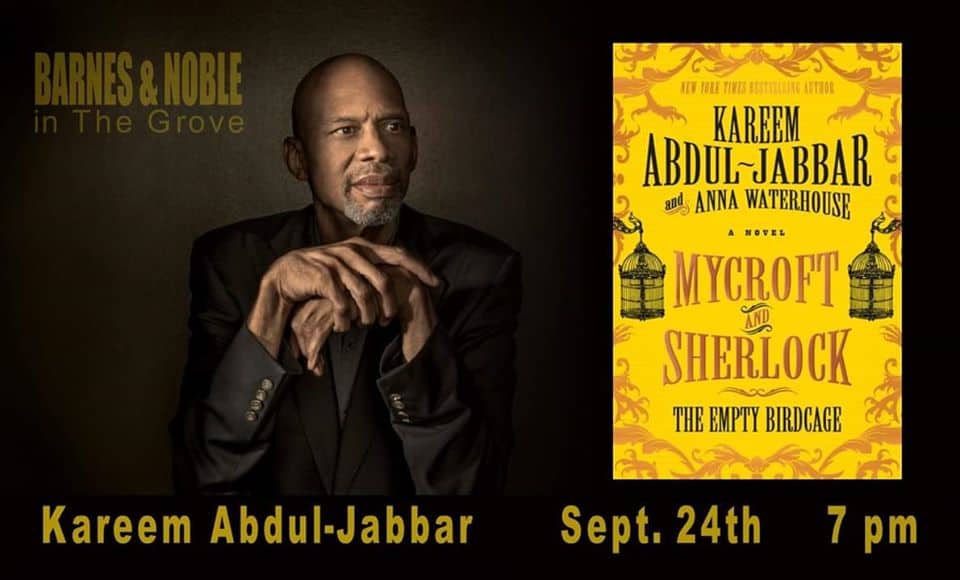
Nineteen-year-old Sherlock Holmes investigates the murders of a young widow; a small-town banker; two boys, aged seven and fourteen, killed separately; a middle-aged chaplain; a retired, eighty-four-year-old barrister; the proprietor of a horse stable, and a ten-year-old girl. The only obvious connection between these victims is that the murderer left a note with “The Fire 411!” written on hemp paper beside each body.
When yet another murder occurs that has a connection to the Royal Family, Mycroft is summoned by Queen Victoria to investigate and stop the serial killer. Mycroft reluctantly partners with his younger brother to solve the puzzles of this series of crimes to reveal a surprising and bizarre secret behind the deaths. I’ve read the first two books in this series–Mycroft Holmes (2015) and Mycroft and Sherlock (2018)–and enjoyed the brotherly friction between Mycroft and his precocious younger brother. If you’re in the mood for an entertain Holmes pastiche, I recommend Mycroft and Sherlock: The Empty Birdcage. GRADE: B
LINDA RONSTRADT: SOUND OF MY VOICE

Linda Ronstradt: Sound of My Voice, directed by Rob Epstein and Jeffrey Friedman, traces Ronstandt’s life from her childhood in Tucson, Arizona to her massive concerts in the largest stadiums in America. Archival footage from various stages of her life and interviews with Ronstradt’s friends–Bonnie Raitt, Jackson Browne, Emmy Lou Harris, Don Henley, Dolly Parton, Aaron Neville, David Geffen, Cameron Crowe–provide a clear picture of Ronstradt’s rise to stardom.
It becomes clear that Linda Ronstradt could sing nearly anything and make it sound wonderful. She sang popular interpretations of American Songbook Standards with the great Nelson Riddle and his Orchestra. Ronstradt sang and performed in The Pirates of Penzance. She sang country-western songs and traditional Mexican canciones. Ronstradt’s relationship with Jerry Brown highlights the segment on romance, but my favorite story was when J.D. Souther asked Ronstradt if she’d make dinner for him. Ronstradt said, “Sure, come to my apartment tomorrow at 6:00 P.M.” When Souther arrived, Ronstradt made him a peanut butter and jelly sandwich. It must have been a great PBJ sandwich because Souther invited Ronstradt to move in with him on the spot.
The heart of Linda Ronstradt: Sound of My Voice centers around the music. Whether it’s Gilbert and Sullivan operetta or traditional mariachi music or covers of Motown songs, the incredible voice of Linda Ronstradt displays her range and versatility. Yet the sound of Ronstradt’s voice gets silenced by Parkinson’s disease. This great documentary ends with tragedy. But the music remains. Do you have a favorite Linda Ronstradt song? GRADE: A
FREEDOM AND ITS BETRAYAL: SIX ENEMIES OF HUMAN LIBERTY By Isaiah Berlin
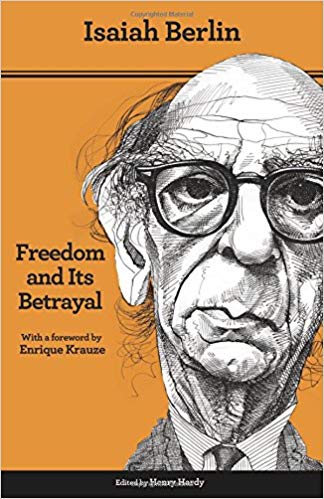
In these troubling times, I find relief in reading historical works that explain how we got into the mess we’re in. I’m a huge fan of Isaiah Berlin, a polymath who wrote about philosophy and history and politics with clarity and wit. Freedom And Its Betrayal is a collection of Berlin’s radio lectures on the BBC in 1952. In these brief lectures, Berlin shows how the ideas of key thinkers influence the politics and events of today.
My favorite lecture is on an historical figure I was unfamiliar with: Claude-Adrien Helvetius (1715-1776). Helvetius was a man of extreme positions. He believed most people were stupid so he advised the Government on the proper approach to Education. “[Educators] must not waste time on history because history is nothing but the talk of crimes and follies of mankind. It may have certain lessons to teach us–one may teach history if it is only to show why it is that humanity, as a result of being ruled by knaves, as a result of being duped too much by its earlier rulers, has not done as well as it might.” (p. 18)
Isaiah Berlin proceeds to expose the anti-liberty aspects of the thoughts and writings of Rousseau who thought that “Man was born free and yet everywhere he is in chains.” Liberty needs rules and a Government to enforce them. Rousseau believed freedom could just happen “naturally.” Oops!
Fichte and Hegel believed History was the key factor in Life. Their writing focused on the patterns that create Historical movements and unleash the power of Ideas. Saint-Simon introduced Economics as the key factor in History. It was Saint-Simon that created the various income classes that Karl Marx would later use in his Communism writings. Maistre asserted the Divine Right of Kings and urged the elites that ran France to keep power away from the people.
If you’re interested in politics and history, Freedom And It’s Betrayal makes for wonderful reading. GRADE: A
Table of Contents
Foreword by Enrique Krauze xi
Editor’s Preface xxiii
Introduction 1
Helvétius 11
Rousseau 28
Fichte 53
Hegel 80
Saint-Simon 113
Maistre 142
Appendix to the Second Edition
‘Two Concepts of Liberty’: Early Texts 169
References 269
Index 293